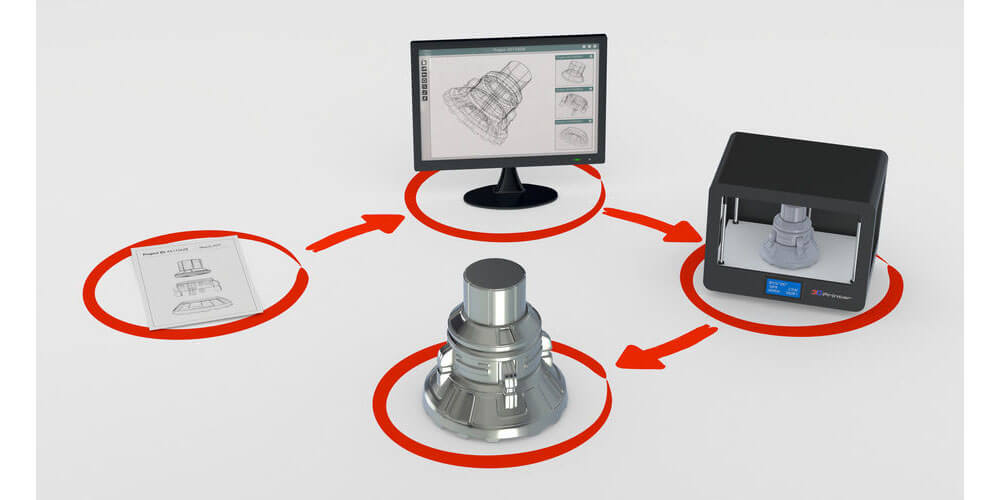A good prototype manufacturing presentation allows you to take your idea to the next level. Prototype manufacturing has become a way of showcasing excellent skills in the production industry. With a prototype, you are certain of exploring a world of unlimited creativity by converting your great thoughts into a three-dimensional version.
Prototype manufacturing companies are working hard to ensure the market gets the best products. As a prototype creator, it’s essential to develop the best model to stand out from the many idea presenters. Whether your project is big or small, you’ll always impress your audience when you walk into a room with a prototype in your hand.
Keys to a Successful Prototype
Regardless of the type of prototype, you choose to work with, ensuring that it owns great features gives you a chance to do your presentation successfully. The following are key characteristics of a good prototype.
1. Provides Illustrations
A good prototype should demonstrate the product’s real-world function ability. Also, it should show whether or not the product needs to be fine-tuned.
2. Shows Product Interactions
A great prototype shows how the product interacts and fits with other components or pieces. Additionally, it indicates if the dimension or the design is needs adjustments.
3. Provides a Close Facsimile
In this case, the prototype should offer a close facsimile of the end product’s actual aesthetics. It should indicate whether the product’s appearance is in keeping with your overall needs and goals.
4. Proves Proper Product Manufacture
A great prototype should prove that the product will go through a proper manufacturing process. Alternatively, it should indicate that you can consider other means.
5. Raises unaddressed Questions
If any questions were previously not attended to during product design, the prototype should raise them to answer and stay clear. In case of an arising problem, there should be room for design improvement.
6. Offers Reasonable Confidence
When presenting your product, having confidence assures you of the need to move forward. A good prototype should provide you with a sign that your product is ready to move forward. It should happen after performing tests, examinations, and all other stages.
7. Fits Budget
Having a prototype that doesn’t fit your budget is a sign that you need to check the type and your investment. When creating a prototype, ensure that it fits your budget to avoid inconveniences.
Tips to Achieving a Successful Prototype
Nothing goes well without enforcing great tips. Because your mission is to present your idea and produce it into the market, you may need great guidelines, including the following;
1. Understand Your Needs
Because every developer and product have different needs, it’s important to know your requirements. Ensure to answer all your queries, solve your problems. It’s crucial to understand how such specifications apply to you before proceeding because it’s hard to measure your prototype’s success if it doesn’t meet your goals.
2. Know Your Prototype Provider’s Specialties
A great prototype provider adds value to your idea by easing the process. Moreover, such professionals should provide valuable experience and expertise throughout the process.
Some prototype providers may only provide 3D printing or rapid prototyping because they lack the capabilities to accommodate a short injection molding for you even though they are willing. So, it’s important to research your potential prototype provider before finalizing your mind.
3. Outline Particular Goals for Each Prototype
Usually, a prototype may not operate many things at once. It could be because of cost, practicalities or logistics of the product, or other factors. In such a situation, be clear on what you are looking for in a prototype. For example, if your interest is in rapid prototyping, your iteration goal should be ensuring your product looks great to your investors and consumers.
4. Know Your Particular Prototype’s Limits
Knowing the limits of your particular prototype is essential. Keep in mind what a specific iteration shouldn’t or can’t perform. Types of materials and rapid prototyping are excellent choices for functional prototype production, while others are great for cosmetic testing.
5. Know Your Prototype’s Material Properties
It’s crucial to note your prototype’s material because of the difference in flexibility, hardness, resistance to temperatures, durability, strength, etc. Identify these properties when testing and proving a prototype and the material you selected for your end product.
6. Break Tunnel Vision
Sometimes, developers may miss big picture issues by becoming detail-oriented. Ensure to test your prototype with those unaware of your product outside your organization. It will summarize different ways of interacting and viewing your product.
7. Keep Your Mind Open
It is advisable not to quickly accept what your prototype does what it’s supposed to do. Instead, be ready to learn more about it. Examine your product and think about how to improve it.
Bottom-line
As you plan for your prototype production, remember not to blow away your budget. It’s vital to stay your prototyping cost’s top as your overall budget. Find a prototype provider offering excellent services at cost-effective prices.

